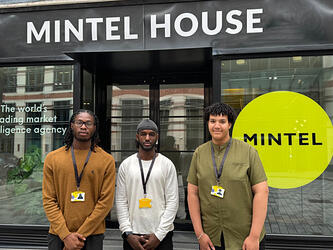Can research match the new marketing model?
Carroll believes there is a new marketing model emerging and that we’re currently in a technological marketing phase where we’re “learning the science of plugging this machine back together”.
And while there are more and more platforms on which brands can communicate, brands are in danger of confusing ‘talk’ with ‘conversation’.
“It’s about listening – being treated with respect – which happens in the research community but less so in marketing. We must be mindful to integrate listening into the new marketing model,” he added.
Phil Shaw, head of digital, Ipsos ASI (pictured right) pointed to the rise in real-time marketing and how some brands had been agile on social media in responding to outside events. Among the examples he cited were KitKat’s response to Apple’s #bendgate, Nissan’s Royal baby ad, and O2’s humorous Twitter engagements.
And he pointed to how some brands were taking it one step further such as Kleenex using Google search query data to identify where in the UK most people were searching for flu remedies and then serving its online ads to those locations. Kleenex estimated the campaign returned a 46% year-on-year sales increase.
“Real time marketing uses data to reach real people with relevant marketing. How can research help? By reaching people at the right time,” said Shaw.
Testing the mood
Meanwhile, Lurpak used national mood data (news, weather and social data) to tap into the spirit of the nation because when people need cheering up they turn to comfort food. So using this data it only ran digital activity when the data pointed to people feeling low. Shaw said Lurpak estimates this led to a 9% increase in sales and saved more than £1m in media efficiency.
For Birds Eye, it went with only serving ads to people when they were most likely to be hungry – between 5 and 11pm.
“Reaching people in the right need state is more likely to lead to activation,” said Shaw. Thirty-three per cent of hungry people who saw the ad said they wanted to ‘eat fish fingers right now’ compared with 12% of those who weren’t hungry.
But Shaw did express a note of caution: “It is not cost free. We need to ask awkward questions such as how it compares with a paid-for campaign. The danger is to just join the clutter in real-time. There needs to be synergy between the brand and content for it to be likely to work and stand-out in real-time marketing.”
His checklist was:
- Right content at right time – in-home, in-store, the moments that matter.
- Real time is a tactic, not the tactic – strike the right balance between short-term activation and long-term brand building.
- Creativity is the primary driver of effectiveness – it will make it stand out and cut through.
“75% of an ad’s ability to leave brand-linked memories is through creativity”
Finally, Eleanor Thornton-Firkin, head, nurturing great creative, Ipsos (pictured right) talked about the emotional engagement of advertising and how that can impact response. “Most decisions are intuitive and automatic. Emotional brand associations help to underpin the automatic response,” she said.
She explained how Ipsos had used facial coding to look at four different ads, all emotionally engaging, from Apple, 3, McVities and Always to see how the ads worked.
Measuring fame
It measured fame by how much the ads were shared, each was given a transmission score – out of 100 this is the potential of a campaign to get passed on and shared. Of the four ads looked at Always’ Like a Girl campaign (image above) scored the highest at 44 (McVities scored 30 and 3 scored 33 ).
Thornton-Firkin said: “There are short-term pressures but brands win when they think long-term too. For Apple its job is emotional priming, it’s a long time until purchase.”
And she gave a final checklist for what to look out for in successful ads: attraction – start with happiness and surprise; attention – roller coaster of happiness; engagement – keep them with you and impact – make them happy at the end.

We hope you enjoyed this article.
Research Live is published by MRS.
The Market Research Society (MRS) exists to promote and protect the research sector, showcasing how research delivers impact for businesses and government.
Members of MRS enjoy many benefits including tailoured policy guidance, discounts on training and conferences, and access to member-only content.
For example, there's an archive of winning case studies from over a decade of MRS Awards.
Find out more about the benefits of joining MRS here.














0 Comments